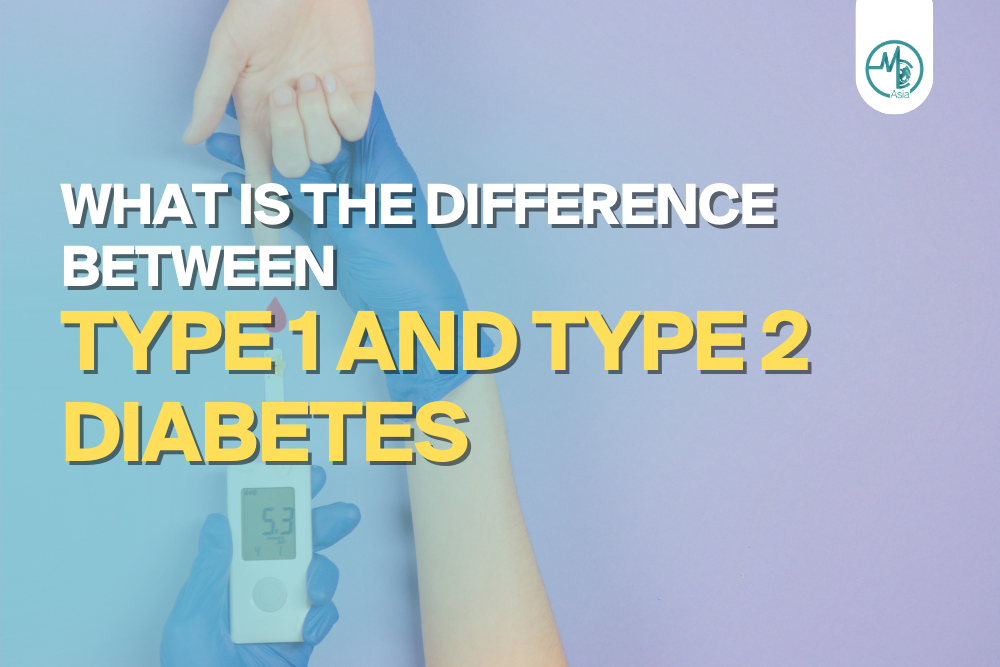Diabetes is a chronic condition that affects millions of people worldwide, but not all diabetes is the same. Primarily, there are two types of diabetes: Type 1 and Type 2.
While they share a common name and some symptoms, significant differences exist in their causes, onset, management, and impact on life. Understanding these differences is crucial for effective treatment and management. We learn more along with Dr Peter Goh, Consultant in Bariatric Surgery at Advance Surgical Group.
What is Diabetes?
Before delving into the types, it’s important to understand what diabetes is. Diabetes is a metabolic disorder characterised by high blood sugar levels over a prolonged period. This high blood sugar is due to either the pancreas not producing enough insulin (a hormone that regulates blood sugar) or the body’s cells not responding properly to insulin.
Type 1 Diabetes: An Autoimmune Condition
Type 1 diabetes, previously known as juvenile diabetes or insulin-dependent diabetes, is an autoimmune condition. This means the body’s immune system mistakenly attacks and destroys the insulin-producing beta cells in the pancreas. This destruction leads to a lack of insulin.
Key Characteristics of Type 1 Diabetes:
- Onset: It often develops in childhood or adolescence, but it can occur at any age.
- Cause: The exact cause is unknown, but it is believed to be a combination of genetic predisposition and environmental factors.
- Insulin Dependency: Individuals with Type 1 diabetes require regular insulin injections or an insulin pump to manage their blood sugar levels.
- Symptoms: Rapid onset of symptoms like increased thirst and urination, unexplained weight loss, and fatigue.
Type 2 Diabetes: A Lifestyle-Related Disease
Type 2 diabetes, formerly known as adult-onset or non-insulin-dependent diabetes, is far more common and usually develops later in life. It is strongly linked to lifestyle factors and obesity.
Key Characteristics of Type 2 Diabetes:
- Onset: Most commonly occurs in adults, but it’s increasingly seen in children, coinciding with rising obesity rates.
- Cause: It is primarily due to insulin resistance, where the body’s cells do not respond effectively to insulin. Over time, the pancreas can’t make enough insulin to keep blood sugar at normal levels.
- Management: Can often be managed with lifestyle changes, oral medications, and sometimes insulin.
- Symptoms: Symptoms develop more slowly and can be subtle; they include fatigue, increased hunger and thirst, and blurred vision.
Management and Treatment Differences
While both types of diabetes involve managing high blood sugar, the approach differs significantly.
- Type 1 Diabetes: Management involves a careful balance of insulin therapy, diet, and exercise. Blood sugar monitoring is essential for adjusting insulin doses.
Dr Goh added that “Type 1 diabetes is still incurable and requires insulin for life. The only permanent treatment is a pancreatic transplant, but this is usually fraught with danger, and it also replaces one problem with another because the patient now has to be on immune suppressants for the rest of his life.“
- Type 2 Diabetes: Management initially focuses on lifestyle changes like diet, weight loss, and exercise. Medications to improve insulin sensitivity or insulin therapy may be required as the disease progresses.
Dr Goh shared that “Type 2 diabetes is now reversible by metabolic surgery. About 95% can achieve short-term reversal and 65% of patients can achieve a permanent cure.”
Risk Factors
- Type 1 Diabetes: The risk factors are less clear, but family history and genetics play a role.
- Type 2 Diabetes: Risk factors include obesity, age, family history, physical inactivity, and poor diet.
Complications
Both types can lead to serious health problems if not managed properly, including heart disease, stroke, kidney disease, eye issues, and nerve damage.
Dr Goh shared that “The complications from both type 1 and type 2 diabetes have serious complications when they attack blood vessels. When this happens, it can cause microvascular heart diseases and lead to blindness, kidney failure, loss of sensations in the nerve and more. Macrovascular heart disease causes heart attack and stroke.
Type 1 diabetes usually has more complications and has a greater impact on reducing the lifespan. However, in both diseases, the life expectancy is reduced. Therefore, the patient is better off getting a reversal cure via metabolic surgery.
Conclusion
Understanding the differences between Type 1 and Type 2 diabetes is crucial for awareness, proper management, and treatment. Despite their differences, both require careful monitoring, a healthy lifestyle, and regular medical care. With the right approach, people with either type of diabetes can lead a healthy and active life.
Dr Goh concluded by mentioning that ‘prevalence in Singapore is definitely increasing’. He added that there are many patients who are prediabetic and diabetic who are unaware that they have this disease.












